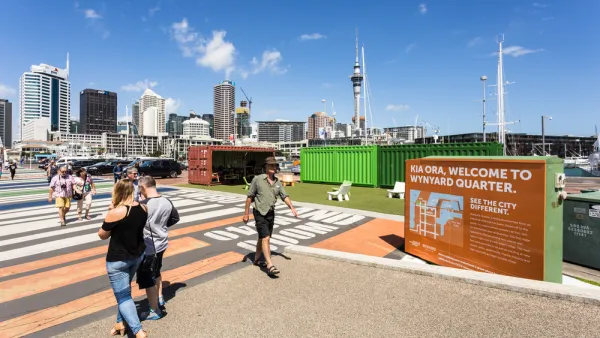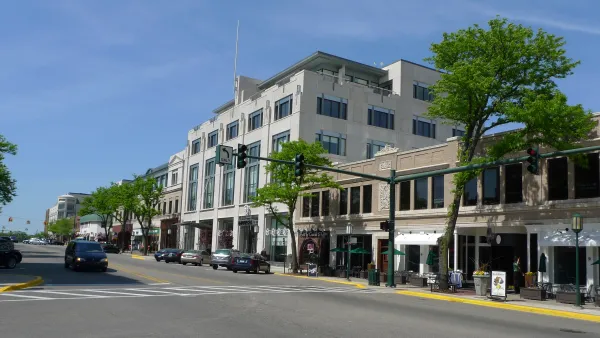There may be a way to supply some of the benefits of form-based codes without heavy-handed aesthetic regulation. In theory, a form-based code could be limited to verifiable characteristics such as setbacks, yard types, building height, frontage size and lot coverage.
In a forthcoming article, Nicole Garnett of Notre Dame Law School critiques form-based codes, on the reasonable ground that these codes often include meticulous aesthetic regulations that may be difficult and expensive to comply with.
However, there may be a way to supply some of the benefits of form-based codes without heavy-handed aesthetic regulation. In theory, a form-based code could be limited to verifiable characteristics such as setbacks, yard types, building height, frontage size and lot coverage.
On the positive side, a form-based code focusing on the sort of objective indicators traditionally regulated by zoning would allow a developer to build buildings that were at least somewhat compatible with the rest of a neighborhood (or with the city's vision of what a neighborhood should look like), without having to pay the costs of aesthetic regulation. For example, a city could mandate that all buildings in a neighborhood be small enough to create a dense, low-rise neighborhood, without telling the developer what the windows, facades or other architectural details should look like.
On the other hand, there may be a trade-off between flexibility and beauty: a zoning code that only addressed objective indicia of community character such as building height and width would allow the creation of buildings that on paper are compatible with a city's plan, and yet are poorly built and/or do not look particularly good.
But even such a permissive form-based code could be used to create neighborhoods that are no uglier than existing sprawl and are far more pedestrian-friendly. So for a city concerned about housing costs and burdening developers, a form-based code that does not regulate aesthetics might be an adequate compromise between a more rigorous form-based code and status quo zoning.

Analysis: Cybertruck Fatality Rate Far Exceeds That of Ford Pinto
The Tesla Cybertruck was recalled seven times last year.

National Parks Layoffs Will Cause Communities to Lose Billions
Thousands of essential park workers were laid off this week, just before the busy spring break season.

Retro-silient?: America’s First “Eco-burb,” The Woodlands Turns 50
A master-planned community north of Houston offers lessons on green infrastructure and resilient design, but falls short of its founder’s lofty affordability and walkability goals.

Test News Post 1
This is a summary

Analysis: Cybertruck Fatality Rate Far Exceeds That of Ford Pinto
The Tesla Cybertruck was recalled seven times last year.

Test News Headline 46
Test for the image on the front page.
Urban Design for Planners 1: Software Tools
This six-course series explores essential urban design concepts using open source software and equips planners with the tools they need to participate fully in the urban design process.
Planning for Universal Design
Learn the tools for implementing Universal Design in planning regulations.
EMC Planning Group, Inc.
Planetizen
Planetizen
Mpact (formerly Rail~Volution)
Great Falls Development Authority, Inc.
HUDs Office of Policy Development and Research
NYU Wagner Graduate School of Public Service




























